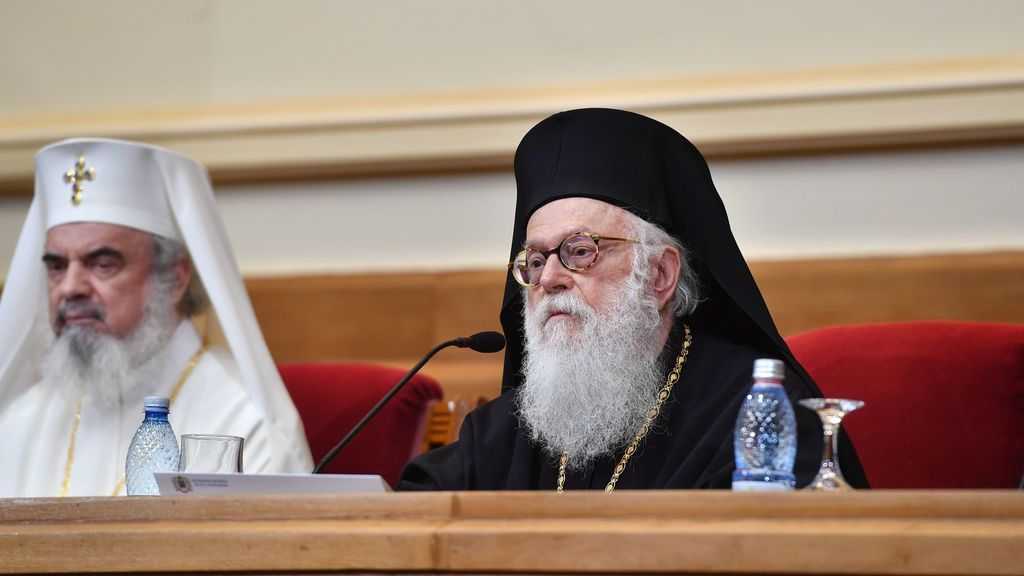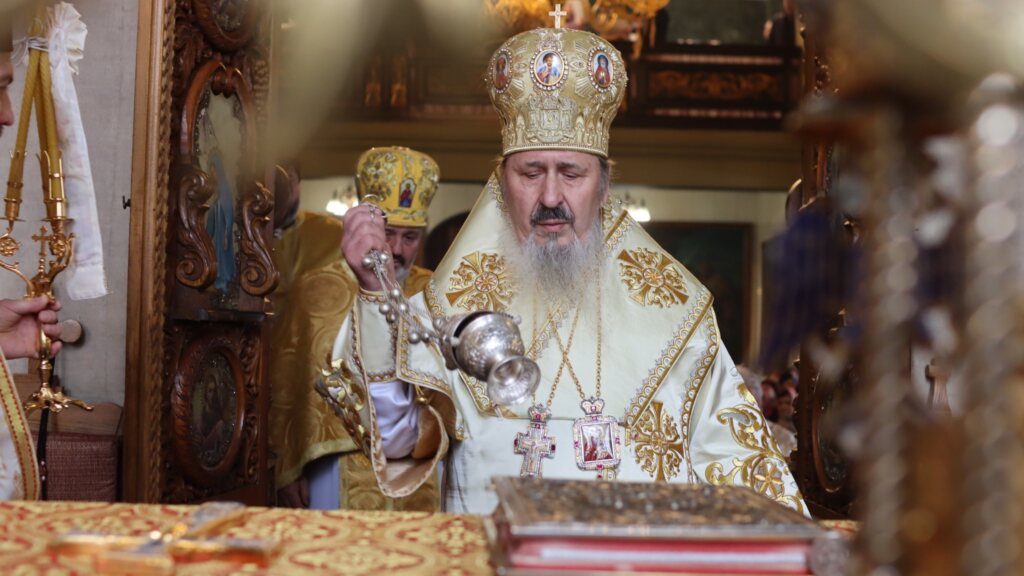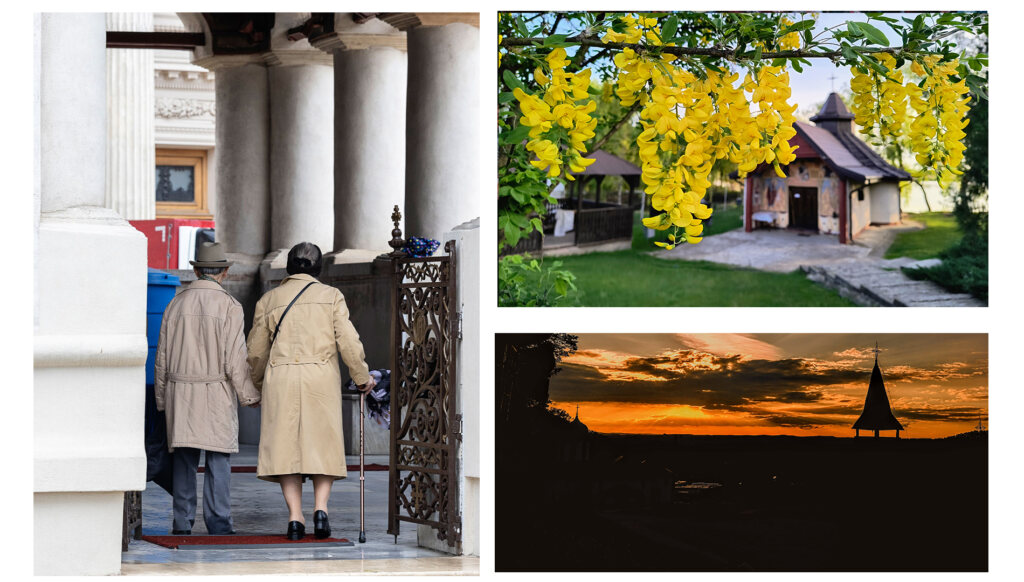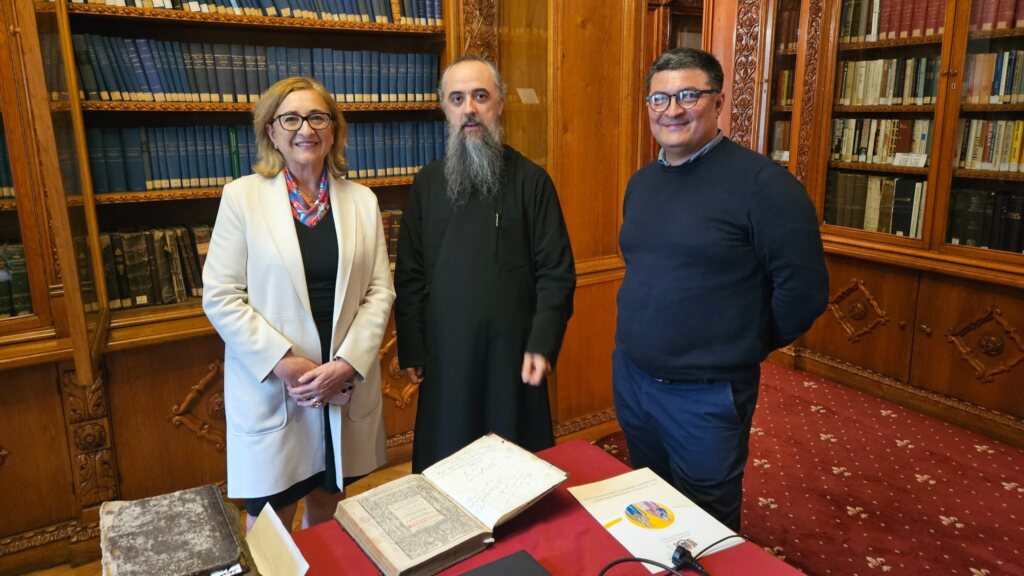Adress of His Beatitude Anastasios, Archbishop of Tirana, Dürres and All Albania, at the Solemn Session of the Holy Synod of the Romanian Orthodox Church, Bucharest, Saturday 28 October 2017.
Difficulties of Confessing the Orthodox Faith during Communism in Albania and the importance of religious freedom today
“For it has been granted to you that for the sake of Christ you should not only believe in him but also suffer for his sake” (Phil. 1:29).
The case of Albania
Throughout world history there have been many forms of persecution of religion. In the 20th century, the persecution of Christians became relentless in areas where atheistic communist regimes prevailed. Their duration and intensity varied from country to country. In Albania, following the withdrawal of the German occupiers (November 1944), the communist regime of Enver Hoxha was fully enforced and the persecution of religion began.
During the first 23 years it had the classic form of known persecutions that took place in Russia and Southeast Europe. The canonical Archbishop Christophoros was placed under house arrest and on 19 June 1958 he was found dead, with a heart attack being listed as the official cause of death.
Paisios Vondicas, a widower and the Bishop of Korçë until then, was appointed as the new Archbishop. Also in Tirana (February 1950), a Clergy-Laity Assembly of the Orthodox Church was convened to vote on a new Charter in the context of the new legal regime, which placed the Church under the full control of the State. For any placement in an ecclesiastical service, even for a diaconal ordination, state approval was required.
In March 1966, Paisios passed away and was replaced on the archdiocesan throne in April by Damianos, an old partisan, who, according to the opinions of many praised theologians and priests, personally contributed to the dissolution of the Church through personal orders and actions. In 1967 he retired to Pogradec, where he died (18 October 1973). Meanwhile, the effort to ridicule the Church and its representatives was intensified by a variety of publications, films and various slanders.
During the next 23 years, 1967-1990, the persecution against religion became complete and relentless (implacable?). By a decree published on 22 November 1967, any religious expression was officially banned by the Constitution of Albania. Hundreds of temples were demolished, others turned into workshops, warehouses, cinemas, clubs, stables, etc. Nearly all the monasteries were destroyed or used as military camps.
At that time, the Church of Albania had, aside from the Archdiocese, three other dioceses, 19 hierarchical districts, 330 parishes and 25 monasteries (not including monastic communities). The clergy was forcibly fragmented through violence. Ecclesiastical property (land, sacred vessels, and records) was confiscated. The slightest expression of religious faith – preservation of icons, religious books, and other symbols – was highly punished. For 25 years there had not been any ordination of a clergyman. Most tragic of all, every single Bishop went missing.
In the dark years of the relentless (implacable?) atheist persecution there have been some whispers of Orthodox confession with individual initiatives. I remember a typical case: Fr. George was a priest at Vouliarates, a southern village near Gjirokaster. He had studied to be a teacher and an agronomist. When the atheist persecution broke out, he was forced to leave his priestly duties and laboured as a worker constructing roads.
One day, when he stopped to take a break from the heavy work and the hot sun, an acquaintance of his, a faithful Orthodox Christian from another village, approached him and whispered to him in a compassionate manner: “In the world you have tribulation.” Fr. George gently lifted his gaze and completed the biblical verse: “But be of good cheer, I have overcome the world” (John 16:33).
Another time, fanatical followers of the atheist party dug a big cross in the middle of the road and forced Fr. George to walk on top of it. He piously kneeled before it, bowed his arms to the Cross and embraced it.
Another priest, Fr. Kosmas Kyrio, who was also forced to work manually and travel with many precautions, liturgized and baptized anyone who wished it in secret. In Korge, a group of women gathered in their homes, with the windows closed and with many other precautions, and organized prayer groups. Their peaceful resistance, warm prayer, and calm confession brought them many fruits.
Mocking and insults have always been a basic part of the drama. Its next actions were exile, hardships, long imprisonments and killings. Clergy were not the only martyrs of faith but laypeople and entire families also.
When the Albanian Communist regime subsided under the pressure of international developments (1991), the Orthodox Autocephalous Church of Albania was totally ruined. The terrible trials, which for decades had destroyed the local Church like a fire, made it look like desolate land.
The Ecumenical Patriarchate, which in 1937 had granted it Autocephaly, took over the initiative to deal with the collapse. In 1991, it sent myself as Patriarchal Exarch in Albania and in June 1992 was elected the Archbishop of Tirana, Durres and all Albania, for the reforming of the Orthodox Autocephalous Church of Albania.
The importance of religious freedom today
Since 1991, religious freedom has been officially enforced in Albania. It was clearly formulated in the new Constitution of 1998.
In preparation for the Constitution we were invited to participate as observers and representatives of the religious communities, which enabled us to propose specific formalities favourable to the Church.
The relevant Article of the Constitution of the Republic of Albania of 1998 provides, inter alia, the following:
Article 10:
1. There is no official religion in the Republic of Albania.
2. The State maintains its neutrality in matters of faith and conscience and guarantees its free expression in public life.
3. The State recognizes the equality of religious communities.
4. The State and religious communities mutually respect each other’s independence and work together for the good of each and every one of us.
5. Relations between State and religious communities are governed by agreements between themselves through their representatives and by the Council of Ministers. These agreements are ratified by Parliament.
6. Religious communities are legal entities. They are independent in the management of their property in accordance with their principles and rules, provided that the interests of third parties are not prejudiced.
On the basis of these fundamental constitutional provisions, the new Statute of the Orthodox Autocephalous Church of Albania was formulated, followed by the envisaged agreement between the Orthodox Autocephalous Church and the Albanian government. These are two texts that constitute a secure legal foundation for the solid reconstruction of the Orthodox Autocephalous Church of Albania.
In another article, the Constitution more clearly ensures the character of religious freedom:
Article 24.
1 Freedom of conscience and religion is guaranteed.
2. Everyone is free to choose or change religion or beliefs and to express them individually or collectively in public or private life through worship, education, sacred rites and offices.
3. No one may be compelled or prohibited from being a member of a religious community, or from engaging in acts of worship or from disclosing his beliefs or beliefs.
Under these circumstances, catechism through preaching started, sacred events began the gospel’s transfer to the cities and villages of Albania.
An eight-member Holy Synod, the Clergy-Laity Economic Council and about 350 parishes were established.
The Orthodox Academy, two Ecclesiastical Secondary Schools and a School of Byzantine Music were founded, with privately owned complexes and boarding schools. More than 170 new clergy were educated and ordained. Youth Centres have been established in various cities as well as youth camps.
More than 150 new temples were constructed, 60 temples and monasteries that had become cultural monuments were restored and more than 160 temples were repaired. 70 ecclesiastical buildings were modernized to be used as schools, youth hostels, health centres, hostels, workshops, soup kitchens for the poor, etc., reaching a total of 450 buildings. The philanthropic care of the Church was developed, with the distribution of hundreds of tons of food, clothing and medicine.
For the transfer of the message of Orthodoxy, a privately owned printing unit was established, which published more than 160 books as well as a newspaper, a children’s and youth magazine and a scientific review. A Radio Station was also created.
Along with the reconstruction of all ecclesiastical structures, pioneering programs have been developed in the fields of education, health, social welfare, rural development, culture and ecology. Finally, for the financial security and the continuation of all this activity, two hydroelectric plants were constructed. It was decided that a percentage of their income would be offered to other underprivileged Orthodox Churches to undertake their missionary work.
The basic purpose of all these initiatives is to convey the message of love with specific works, always having the theological reasoning of the Lord’s words: “that they see your good works and glorify your Father in heaven” (Matthew 5:16).
All this creative effort, which by God’s Grace was accomplished through enormous difficulties, was realized because, ultimately, there is religious freedom that has been properly exploited. It is worth noting, however, that in states where the Orthodox Church is minority, there are many serious cases (court rulings, property returns, educational arrangements, etc.) that are affected by the will of state factors.
In summary, in the specific conditions of religious freedom and coexistence of the Orthodox with people of other religious beliefs and ideologies, the primary duty of the Church is to draw its members through systematic catechism and pastoral effort.
At the same time wider activities to transfer the message of the Gospel to modern Albanian society, respecting the harmonious religious coexistence are to be developed.that “the God of hope fill you with all joy and peace in believing, that you may abound in hope by the power of the Holy Spirit” (Romans 15:13).
* *
The subject of religious freedom certainly has wider universal dimensions. The consciousness that we belong to the One Catholic and Apostolic Church and not to any confederation of Churches requires us to be sympathetic to all the brothers and sisters who face the violation of their religious freedom in other countries. The Apostle Paul clearly defines this debt “if one member suffers, all the members suffer with it; or if one member is honoured, all the members rejoice with it.” (1 Corinthians 12:26).
The new global circumstances compel us, those of us who follow the God of truth, justice and peace, to hasten, to keep our antennas ready to defend the principles of religious freedom, and also peace and justice at the local and global level.
Of course, nothing is done easily and automatically, only with our own strengths. However complex and difficult they are in our time, we dare to hope that “the God of hope fill you with joy and peace inbeliving, that you may aboundin hope by the power of The Holy Spirit” (Romans 15:13).
† Anastasios
Archbishop of Tirana, Dürres and All Albania
Photo credit: Robert Nicolae / Basilica News Agency






